Highlights of the Coachella Valley Preserve
|
The Coachella Valley Preserve is just east of the San Bernardino mountains,
which includes snow-covered Mt San Gorgonio (visible in the background
of this photo) which at 11503 feet is the tallest mountain in southern
California. These mountains are the dividing line between the
desert and the coastal area, which receives much more rain.
|
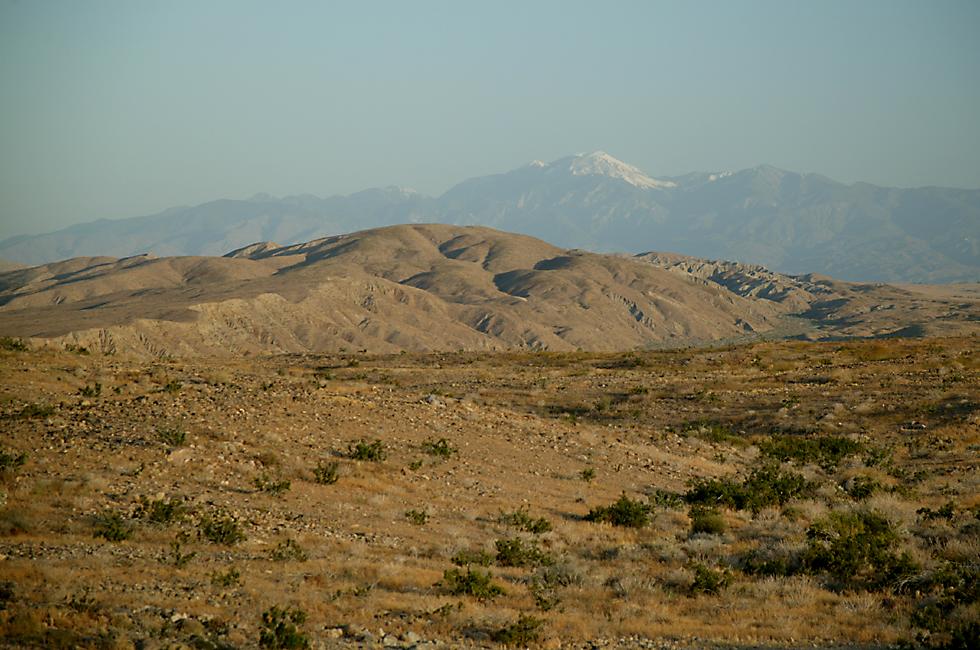 |

|
By a quirk of nature there's water here, too, but it doesn't usually come
in the form of rain. The 20,000 acre preserve is bisected by
the San Andreas fault, and this natural phenomenon results in a series
of springs and seeps which support plants and animals which couldn't otherwise
live in this environment, such as these California fan palms in the Willis
Palm Grove.
|
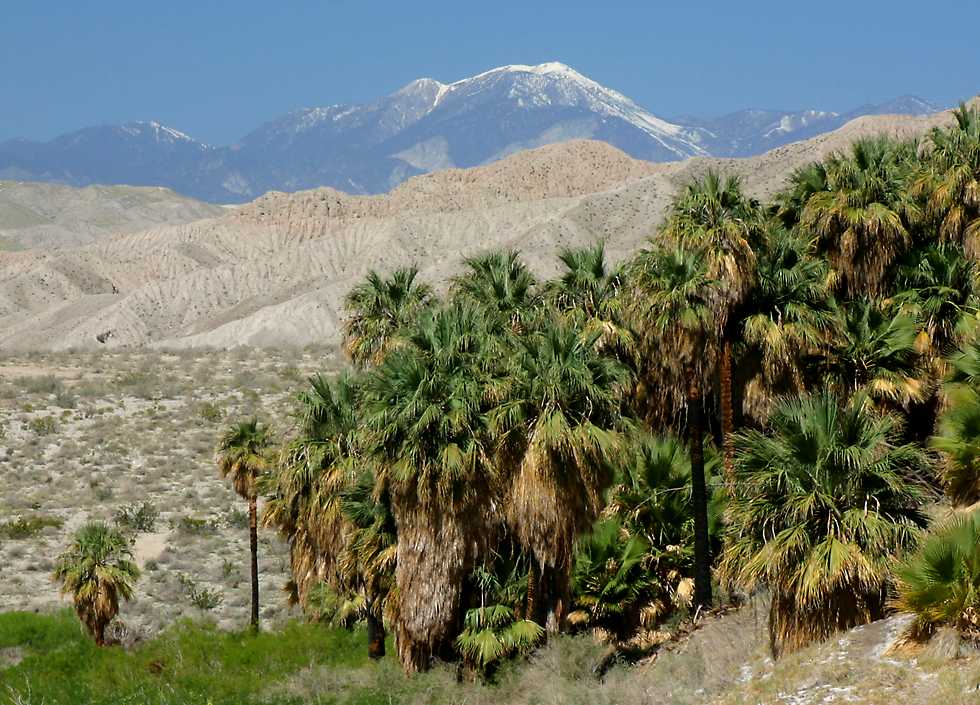 |

|
There are about a dozen isolated palm groves within the preserve, the largest
being this one, the McCallum Grove, which is a few hundred yards from the
visitors' center. There's more water here than anywhere else
in the preserve and the overflow allows a large and diverse community to
thrive.
|
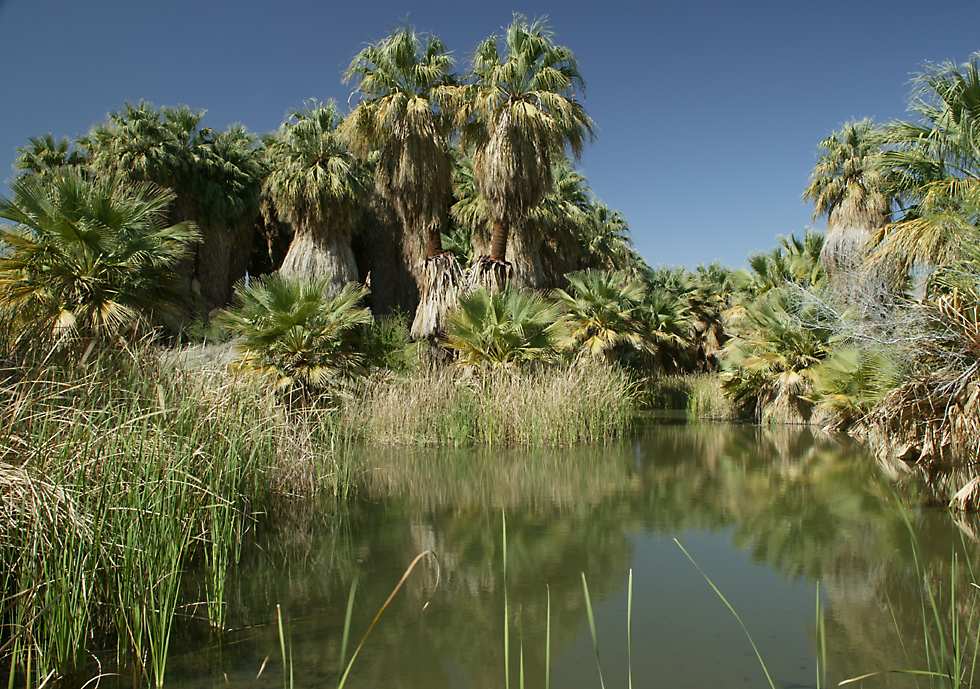 |

|
These palms grow to a height of 45 feet and they retain all of their leaves as
they die off, providing a place for various critters to live.
|
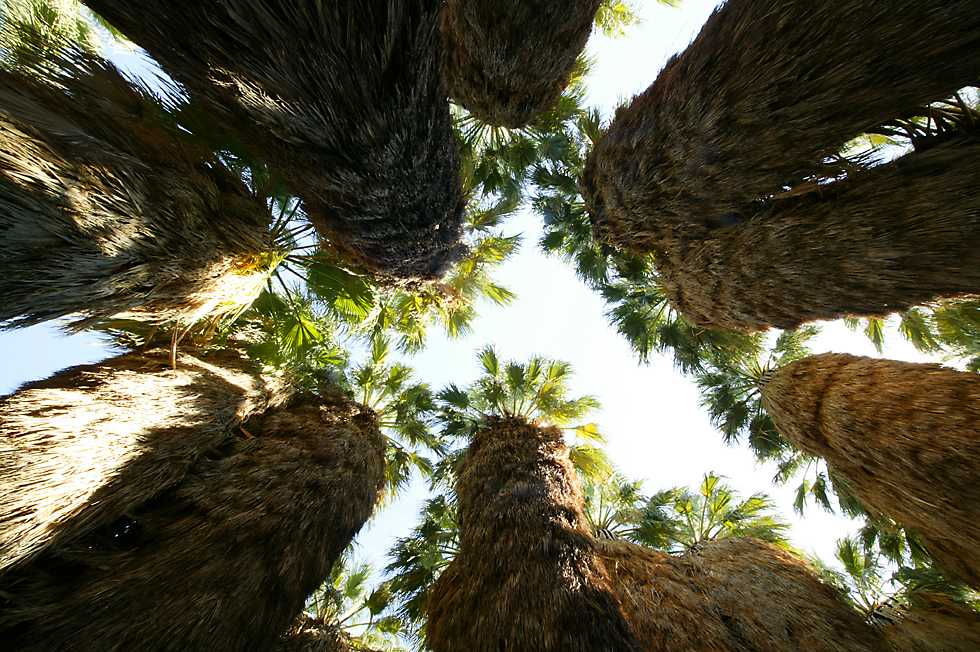 |

|
The McCallum grove spring is home for several creatures too, including tiny
freshwater crayfish called red swamp crayfish, and desert pupfish.
I doubt whether the crayfish are native to the spring, and the pupfish
certainly aren't. The pupfish are in danger of extinction because
their only natural habitat consists of two creeks which feed into the Salton
Sea, an area with invasive species introduced by humans and pollution from
the intensive horticulture in the area. To give them a better chance,
the pupfish were introduced into the spring, which previously had no fish
of its own.
|
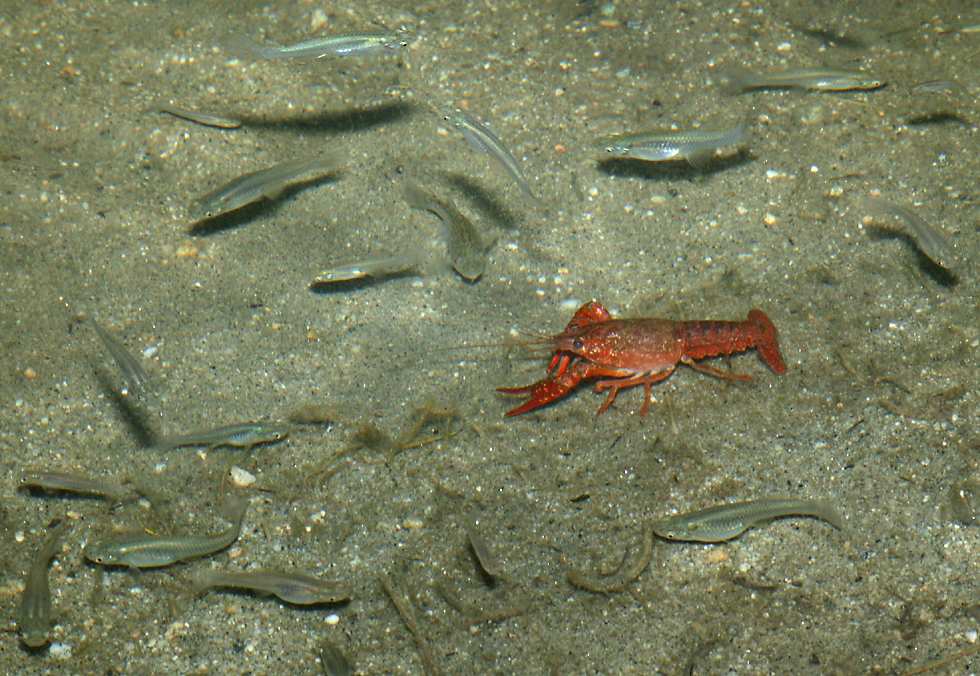 |

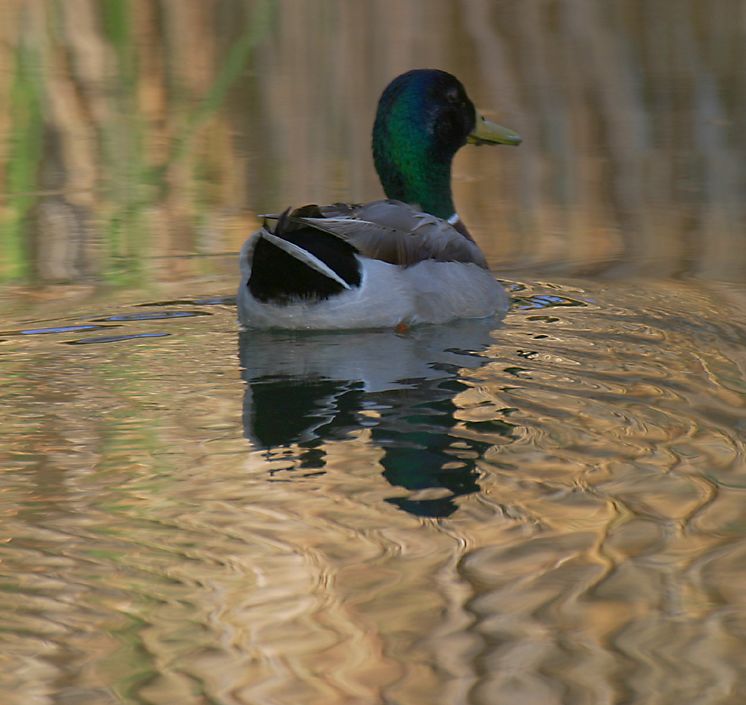
The water allows other unexpected animals to live here too, like this mallard
duck.
The desert is probably too harsh an environment for the mallard to make
a living year round, but as a warm winter refuge or a brief stopover during
the annual migration it's just what the doctor ordered, or perhaps I should
say just what the quack ordered!
|

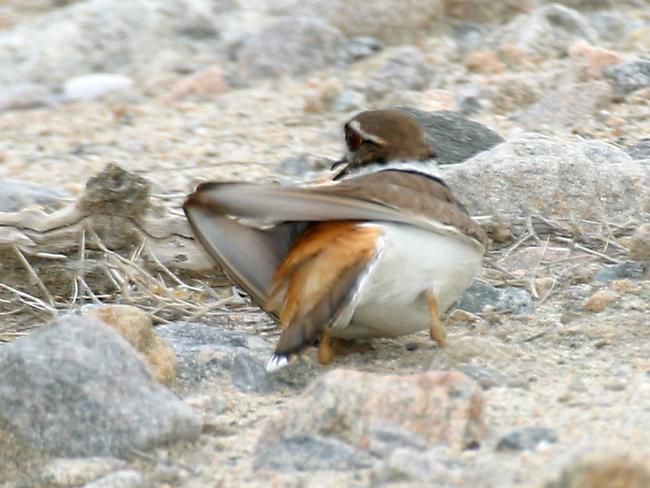
Birds like this killdeer are able to live and raise their families here.
I somehow think of killdeer as being shore birds, but in fact they live
in grasslands throughout the midwest and can obviously cope with the desert
environment, which can reach over 125 degrees fahrenheit (50 degrees
celcius) during the height of summer.
This
killdeer was putting on a performance I've also seen in Illinois, calling
loudly and thrashing around pitifully as if it had a broken wing or leg,
all in order to draw me away from the egg or eggs it's tending near a wash.
|

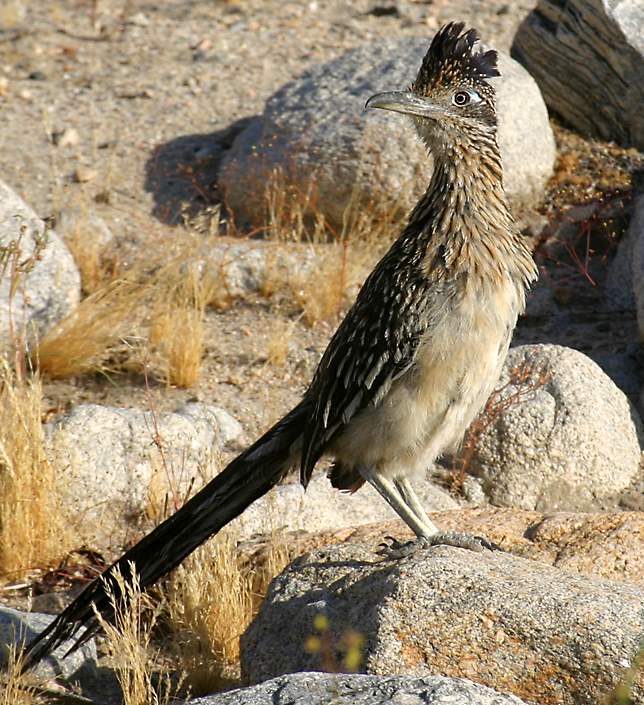
The killdeer and its family might leave before the full heat of summer
arrives, but other birds hang around the whole year, including such delicate
looking creatures as doves.
Many people are surprised to learn that roadrunners are as real as coyotes,
and aren't just the product of a cartoonist's imagination!
The roadrunner is a ground dwelling cuckoo which can only fly for short
distances. Like other members of this family two of their claws point forwards
and two backwards, but unlike some other cuckoos it builds its
own nest, rather than depositing its eggs in the nests of other birds.
Roadrunners eat insects, scorpions, rodents, small birds, lizards and two
or more of them sometimes gang up to kill large snakes. They
can't run as fast as the roadrunner on TV, but they can certainly move
quickly, holding their head and tail parallel to the ground.
|


Gambel's quails like this one gather in large groups called coveys during
fall and winter before breaking up into breeding pairs during spring.
They usually live near a permanent water source, congregating there in
the evening to drink before retiring for the night.
If a predator appears the male will stand in a prominent location to draw
its attention while the female and their 10 or 15 chicks run away to a
safer location, peeping the whole time. Like roadrunners, they're
not really into flying. Unfortunately they're very popular
as a game bird with hunters.
Gambel's quail looks very similar to the California quail, however the
latter has feathers on the chest and undersides which are bordered in black,
referred to as "scaling". The black area on the belly of this
bird identifies it as a male.
|

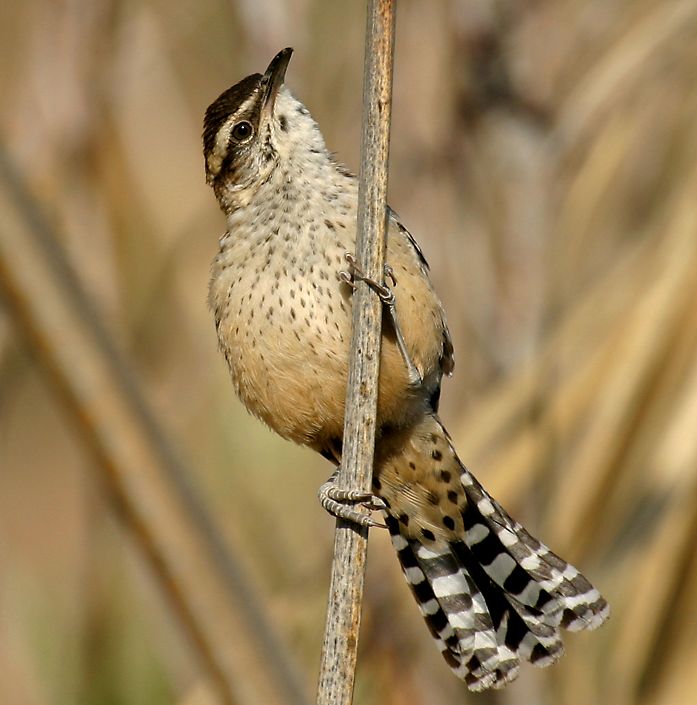
The cactus wren is the largest member of the wren family in the United
States, and is the state bird of Arizona.
They're not exactly common in these parts, but they travel in noisy family
groups and are not shy around humans, so if you do come across them you're
probably in for a show as they hunt for insects in trees and undergrowth.
As its name suggests, the cactus wren makes ball-shaped nests about 10
feet above the ground in the crowns of cactuses or yucca plants.
Unlike most other birds which build nests only for raising their family,
the cactus wren will also make nests for roosting and for sheltering from
bad weather. Apparently they're very fond of using discarded
Gambel's quails' feathers to line these nests!
This one is a juvenile - adults have more black spots on their underparts.
|

|
Perhaps the most surprising inhabitants of the preserve are the many species of
dragonflies, like this blue dasher, and their close relatives the damselflies.
|

|

|
This one belongs to a family called "saddlebags" because of the coloration on
the inner parts of the hind wings.
|
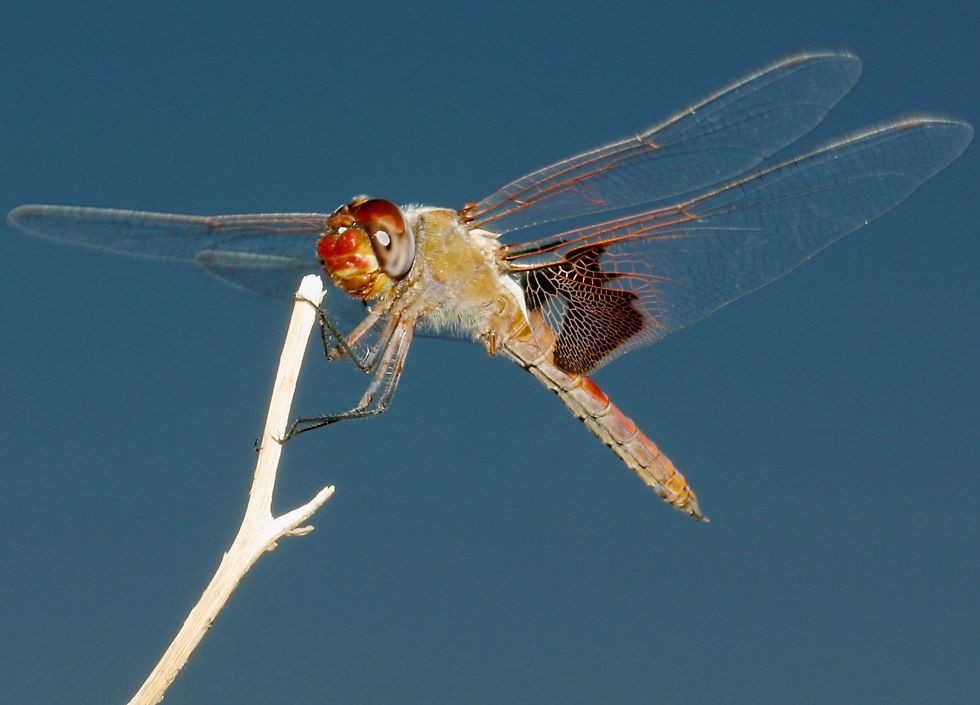 |

|
This female variegated meadowhawk (Sympetrum corruptum) has some nice colors and patterns. The
male is even more colorful, with bright red instead of rusty brown on the abdomen. One way to identify
this species is by the two long stripes on either side of the thorax, each ending in a yellow spot. Variegated
meadowhawks can be found anywhere in the United States, though they're more common in the western
two-thirds of the country.
|
 |

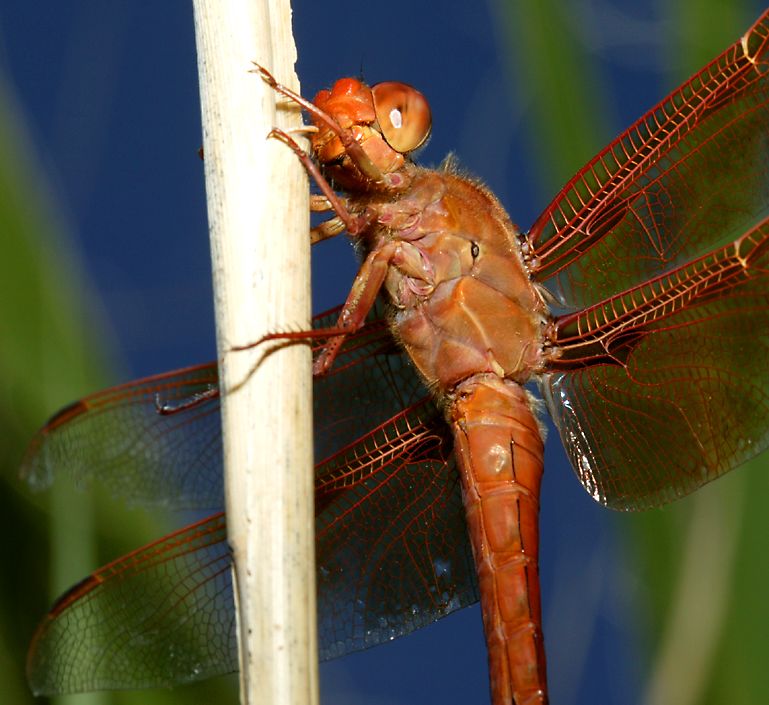
Down amongst the reeds which incongruously grow in the overflow from the
McCallum grove spring.
|

|
Here's a "vivid dancer" damselfly, in typical damselfly posture with its wings
closed.
|
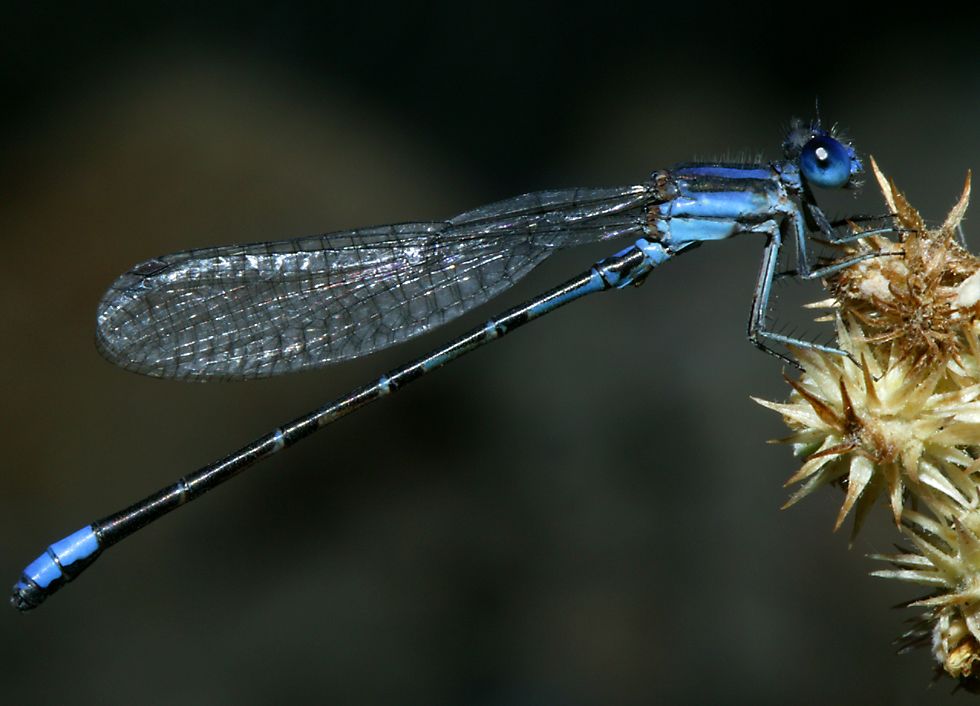 |

|
If you saw the brown damselfly in this photo then you could easily be forgiven
for thinking that it's a different species than the blue one, however as
you can see it's actually the female of the same species. Here
it's laying its eggs in the stream flowing beside the path.
|
 |

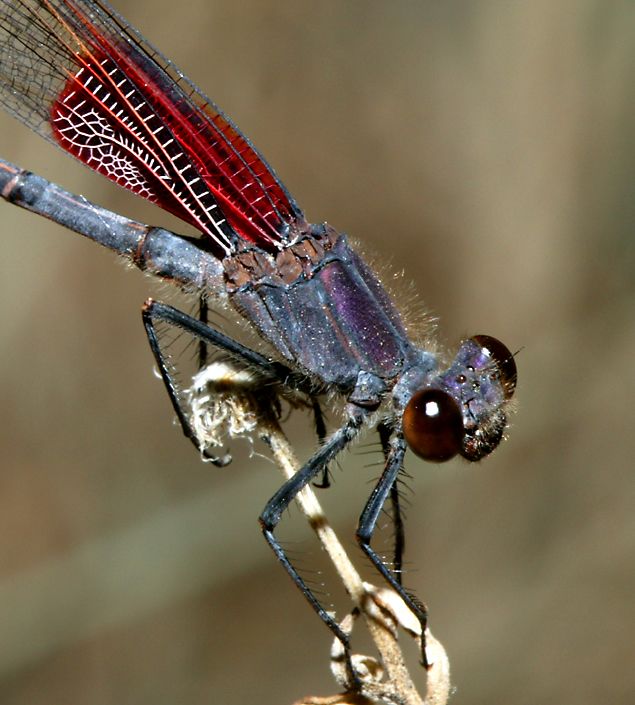
To my way of thinking this is the most attractive damselfly in the preserve,
an American Rubyspot.
They're really spectacular when displaying the bright red coloration on
their wings, though it's next to impossible to get a photo of them with
their wings open.
I had seen one of these beauties near where I photographed the previous
two, unfortunately this was just as a group of people walked through and
scared it away. Luckily I encountered a whole group of them
the next year, across the road from the visitors' center.
You can see some American
Rubyspots which I photographed in Michigan.
|

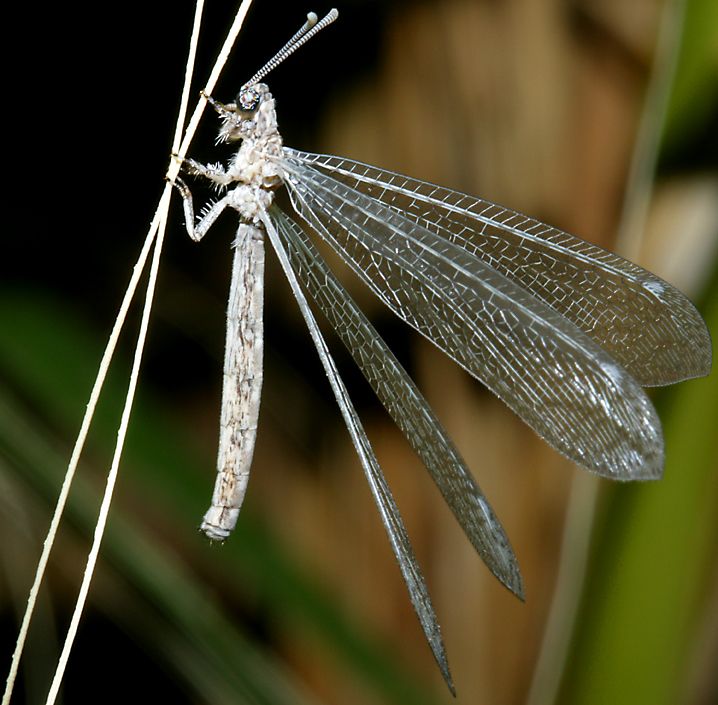
Whoa, what sort of a crazy dragonfly or damselfly is this?
Actually, it's neither, as the antennas on its head indicate.
I first saw a "dragonfly with antennas" in Costa Rica some years ago, which
turned out to belong to an unrelated family called owlflies.
However this isn't an owlfly either, instead it's an antlion, which I
photographed while wandering around the preserve one night. They have
marvellous eyes, which look like little opals.
Antlions are best known in their juvenile form when they sit buried in
the sand at the bottom of a conical trap they've dug. With
nothing but their vicious looking jaws sticking out of the sand, they look
very much like the monster in the Dune Sea which was about to eat Luke
Skywalker and Han Solo, courtesy of Jabba the Hutt. Of course
the scale is a little different, since antlions make a habit of eating
what their name implies, ants.
|

|
In spring it's usual to see large numbers of caterpillars in the preserve,
munching on the desert flowers which appear in large numbers and then vanish
some weeks later. This particular beauty is the caterpillar
of the white-lined sphinx moth; the little tail is characteristic of the
caterpillars of this family of moths.
|
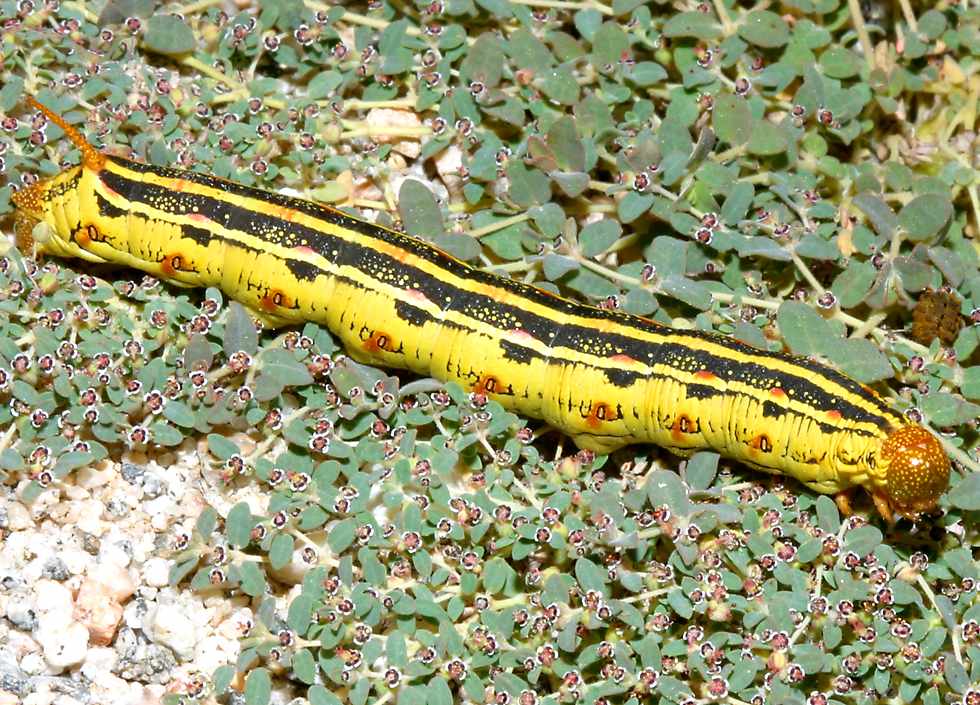 |

|
There are two varieties of walking stick in the preserve, they're normally quite
hard to find but I was lucky enough to come across this one during an expedition
I made which occupied an entire night. Good thing I saw it,
too, since I only saw one other critter the whole night, which you'll see
at the end of this page.
|
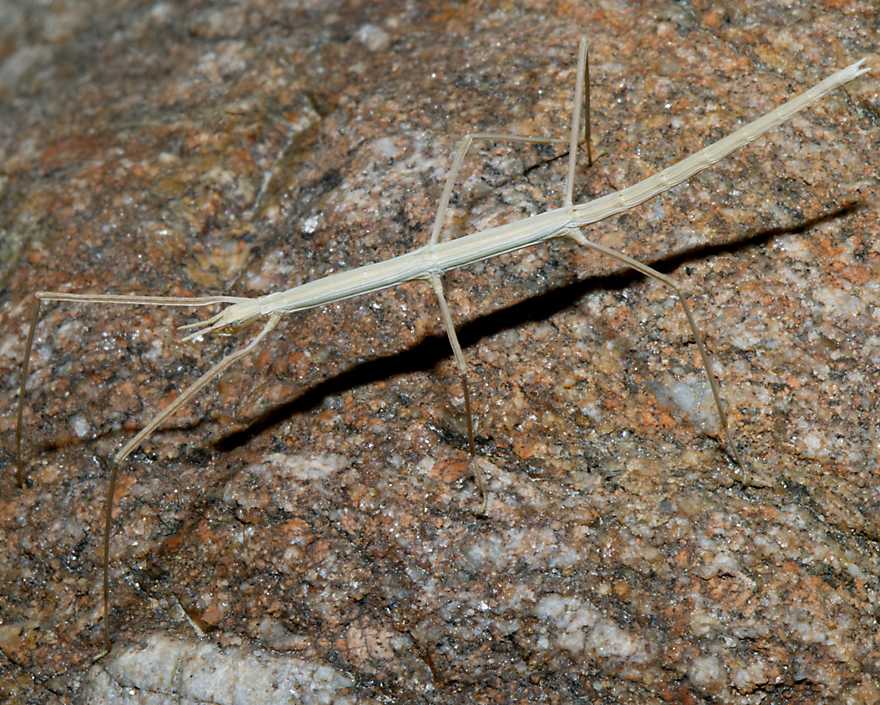 |

|
And here's a bug crawling around the desert floor. Unlike the other
"bugs" on this page, this one is a "true bug", which means that it has
a feeding tube called a "rostrum" folded flat under its head.
True bugs are equal opportunity feeders, with some sticking their sharp
rostrums into plants to suck the juices while others stick their rostrums
into beetles and other insects.
|
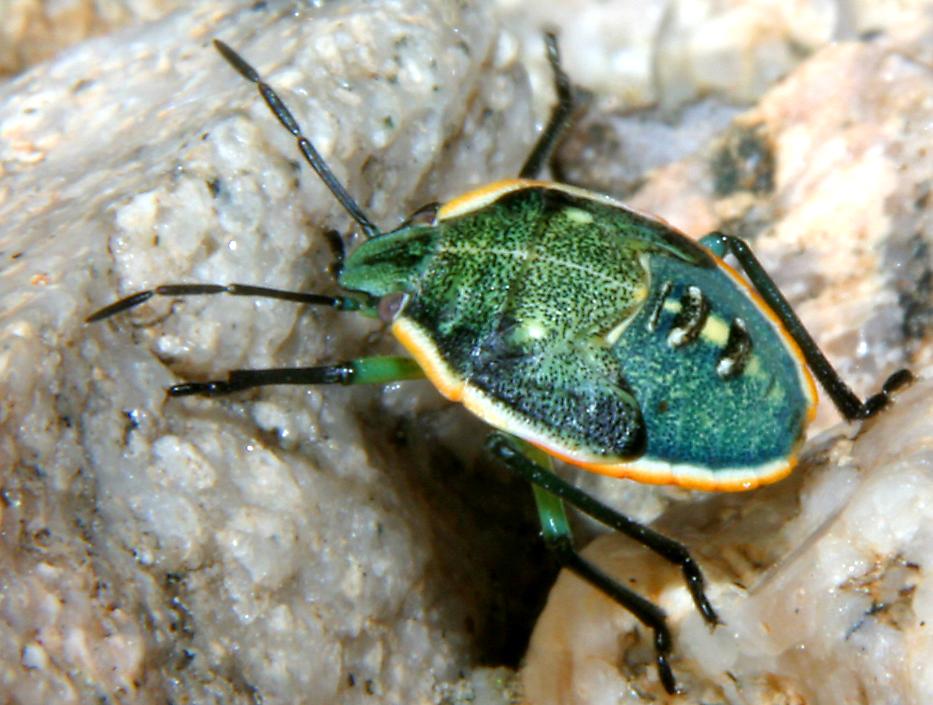 |

|
The bug was fairly near this cactus, which was flowering in the relative dampness
of spring. It's a miracle that there are any cacti left in
the preserve, they're very popular in people's gardens and there are plenty
of people without scruples who are only too happy to "liberate" them for
a quick buck.
|
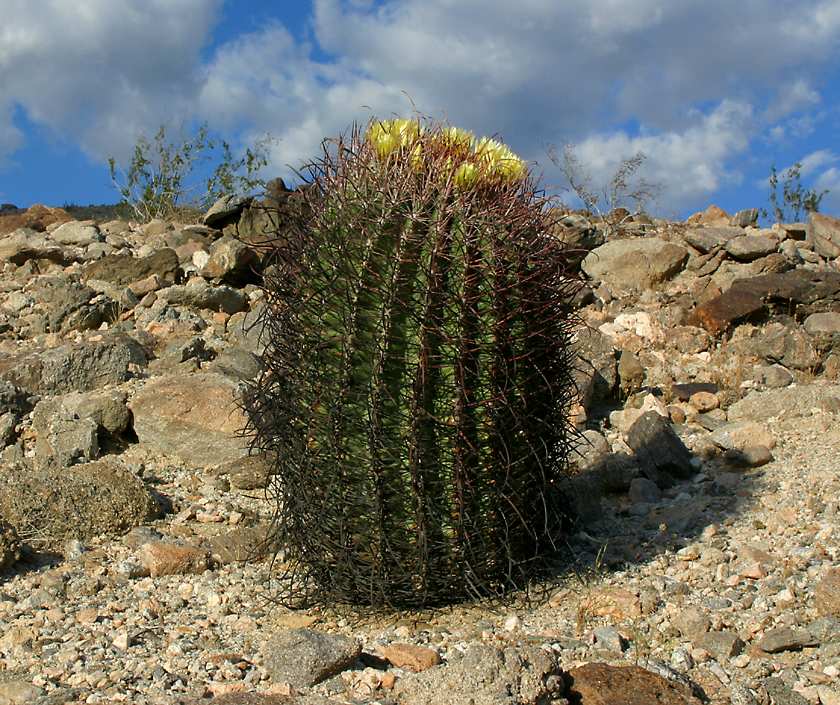 |


This ocotillo is another very typical resident of American deserts.
That's the McCallum Grove in the background, the white area behind the
palm trees on the far left of the photo is one of the sand dunes which
are the main reason the preserve was created - but more about that later.
|

|
This beetle was running at a good clip across the sand near the ocotillo, until
I interrupted it and it very rudely adopted this pose.
|
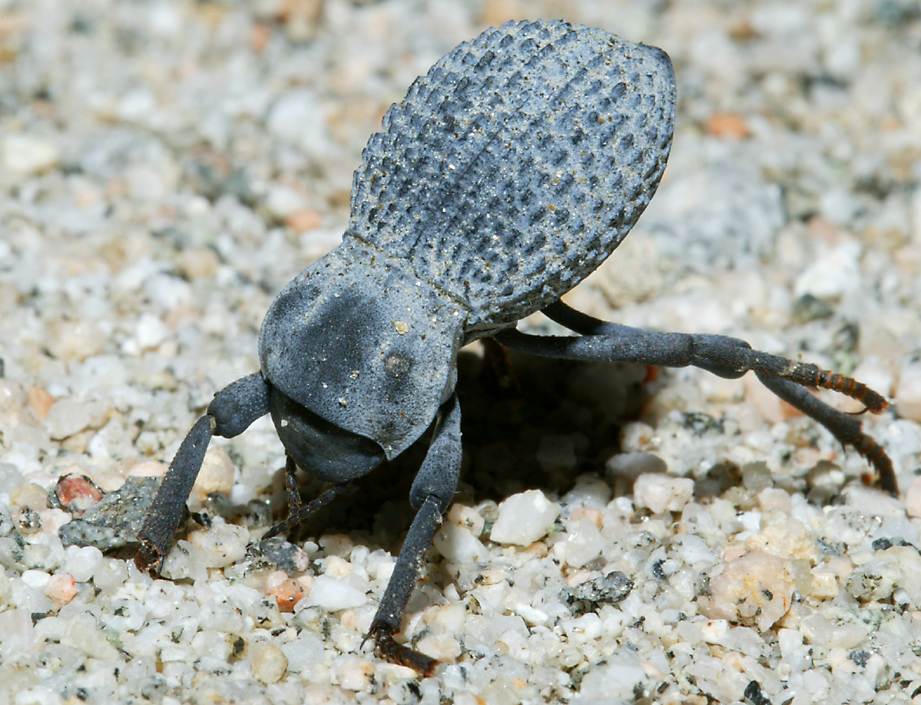 |

|
Rude is one thing, but this desert blister beetle is something else.
It was walking around very casually, perhaps in the knowledge that it's
loaded up with toxins that can indeed cause nasty blisters to anyone or
anything which so much as touches it, let alone eating it.
|
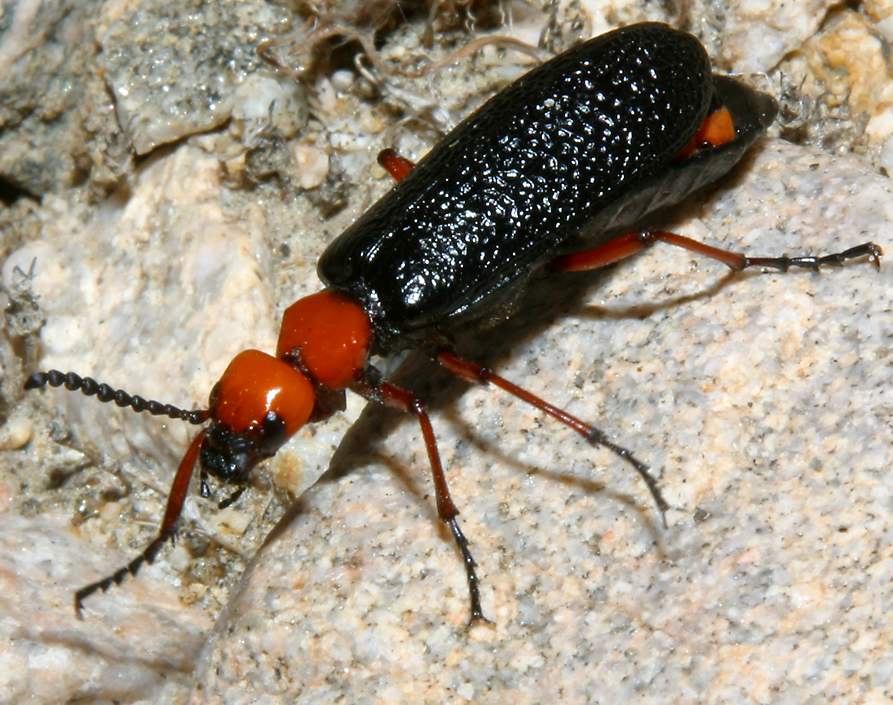 |

|
As well as all of these insects, there are plenty of the reptiles that you'd
expect in the desert. The preserve was created in 1986 as a
refuge for the Coachella Valley fringe-toed lizard, which lives nowhere
else than the sand dunes in the preserve and the few other dunes remaining
in the rest of the valley. It's extremely unlikely that you'll
see one of these attractive looking lizards, but you're almost certain
to see others like side-blotched lizards, zebra-tailed lizards, desert
iguanas or even a desert horned lizard like this one. There's
not enough space on this page to show them, but you can see all of the
valley's reptiles on the Reptiles
of the Coachella Valley page.
|
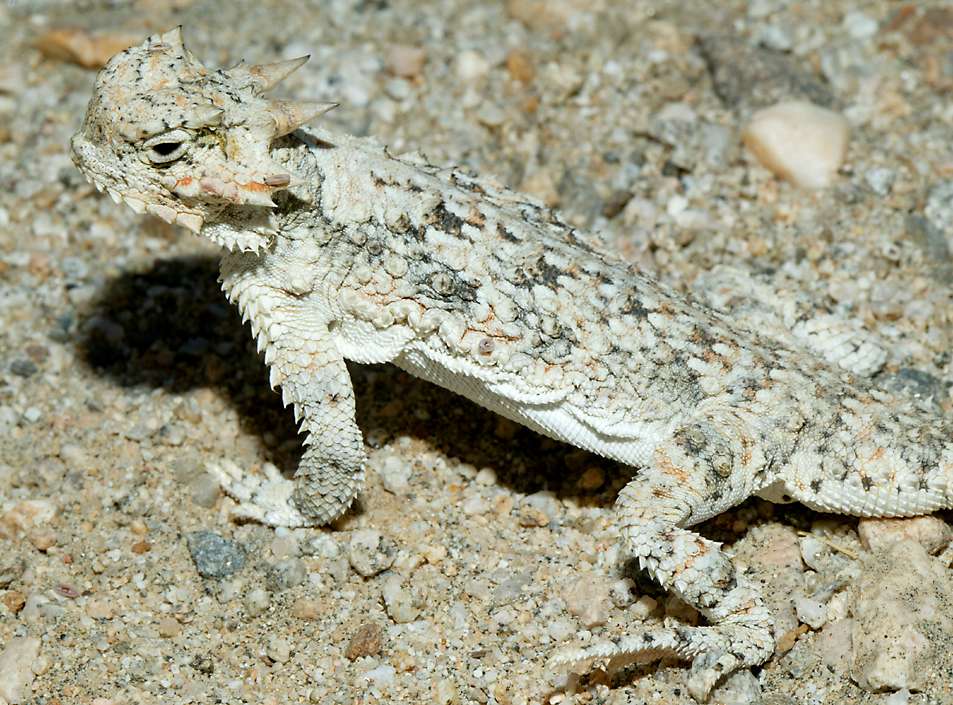 |

|
It was one of the great disappointments of my 18 months living in the Coachella
valley that I only encountered four snakes, even though I spent quite a
bit of time wandering around looking for them. However, like
the horned lizard they can be pretty elusive, both because they spend a
lot of time hiding out of sight and because they're very well camouflaged.
Indeed I didn't even see this speckled rattlesnake until I was 3 or 4 feet
away from it and it started rattling at me! It was right in
the middle of the path I was walking on, and doubtless feared that it was
about to be stepped on. Fortunately as always I was wearing
my knee length rubber boots, which provide complete psychological protection
against snakebite, even in 125 degree heat!
|
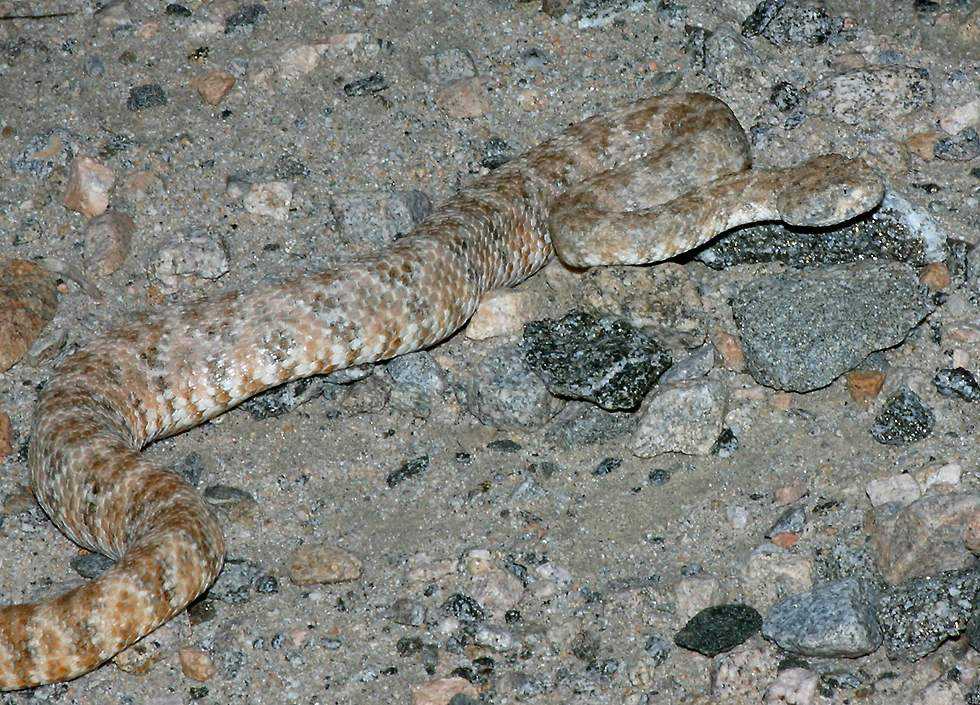 |

|
The desert is a
great place for creepy critters, like this spider wandering around at night
looking for something tasty to eat.
|
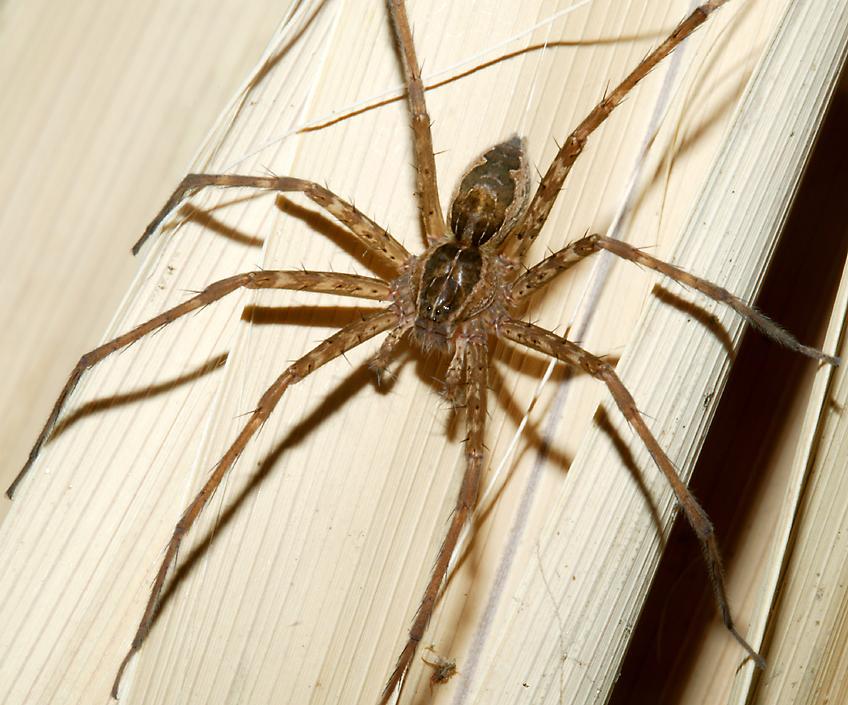 |

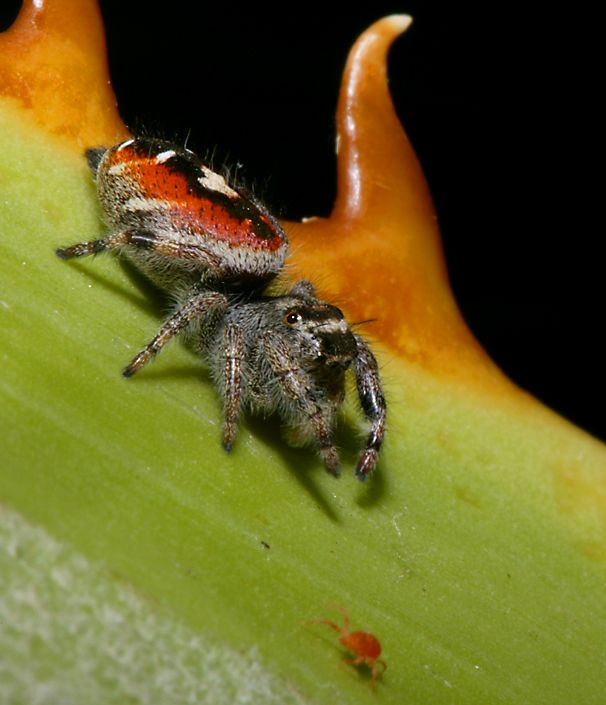
Despite the dark looking background, I photographed this very attractive
jumping spider during the daytime.
Like the previous spider, jumping spiders also actively hunt their prey,
but they do so using a very keenly developed sense of sight, which means
they're active only during the daytime.
This particular one has stumbled across a red velvet mite, which like the
spider is an arachnid with eight legs. It seems that the spider
didn't think too much of the culinary possibilities of the mite, since
it totally ignored it and let it go on its way.
|

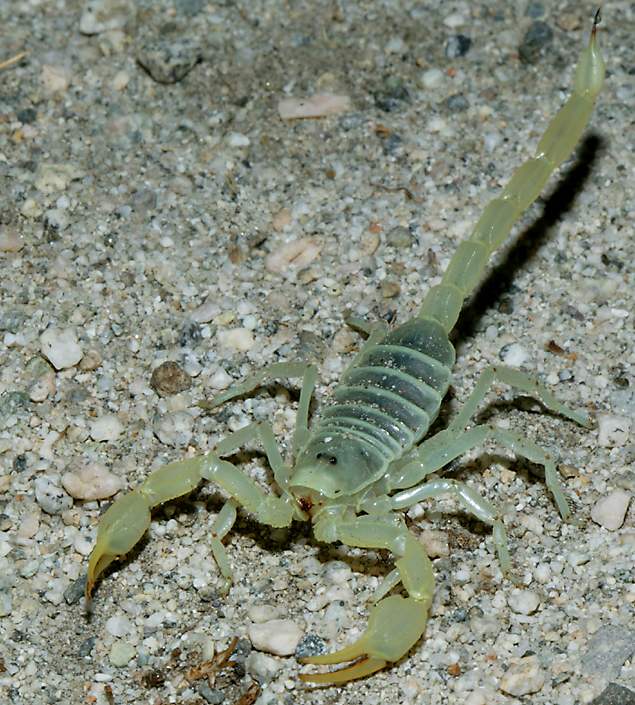
Another arachnid, this time a gold sand scorpion or dune scorpion, complete
with a small drop of venom dripping from the sting at the end of its tail.
Despite their fearsome appearance their venom isn't especially toxic, unless
you happen to be a cricket or even another scorpion. Females
are highly cannabalistic and during the summer mating months males often
end up at the wrong end of their stings, claws and jaws.
This particular species is said to be the most studied scorpion species
in the world. Like the Coachella Valley fringe-toed lizard,
it's exquisitely adapted for living in shifting sand dunes, which are a
very difficult environment for most animals.
|

|
More arachnids than you can shake a stick at! This might look like
a spider but it isn't, instead it's an eight-legged animal called a harvestman,
which people sometimes refer to as a "daddy long legs". At
least it would be an eight-legged animal if it hadn't lost one of its legs!
Unlike spiders, harvestmen have only two eyes and they don't spin silk.
They actively roam around looking for prey, this one was doing so at night.
|
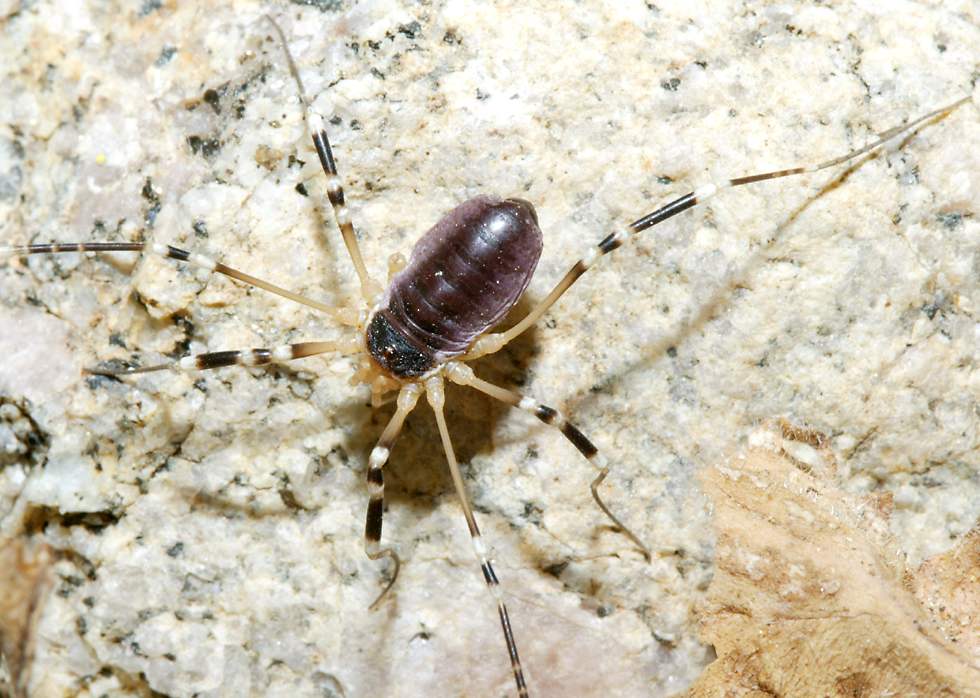 |

|
Another arachnid, and the scariest of a scary bunch. This is a sun
spider, also sometimes called a camel spider or wind scorpion, though it's
neither a spider nor a scorpion. It might seem that it has
10 legs, but the front pair are actually pedipalps like those of a spider,
though in this case they function more like an insect's antennae.
Sun spiders are not venomous, but those jaws are powered by exceptionally
powerful muscles and they can leave a large and painful wound.
|
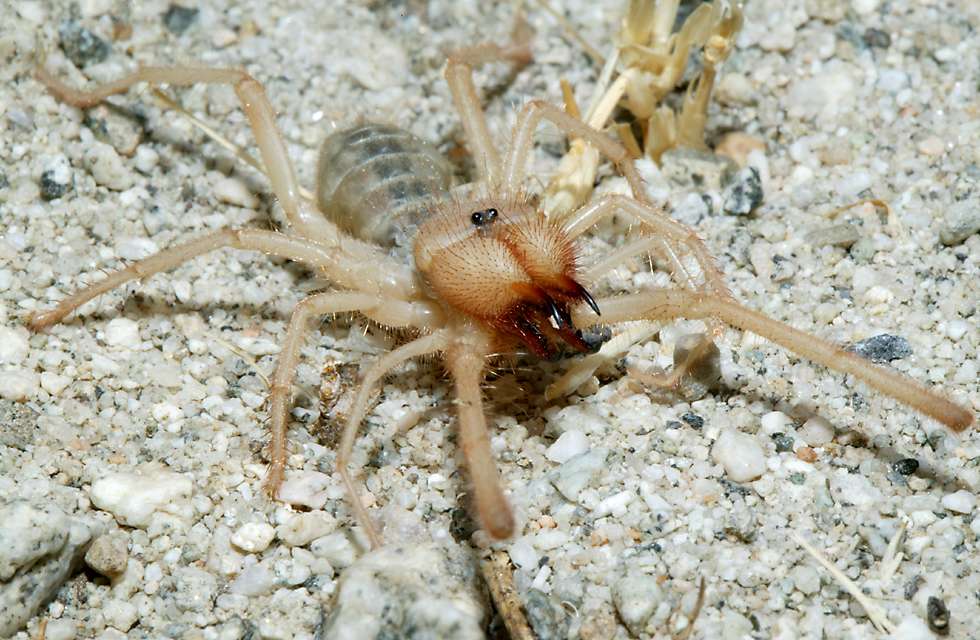
|

|
Remember that walking stick I saw one night out in the desert? Well,
here's the only other animal I saw that night, a fox. I was
feeling very paranoid that night, wondering if I might somehow end up as
a meal for the cougars which live in the area, who usually spend their
spare time picking off neighbourhood dogs and cats. When my
flashlight lit up this pair of eyes in the otherwise pitch dark desert,
my first impulse was to pick up some throwing-size rocks for self defense.
However the fox was more scared of me than I was of it, and I managed to
get only this one photo as it moved out of the area.
|
 |

































